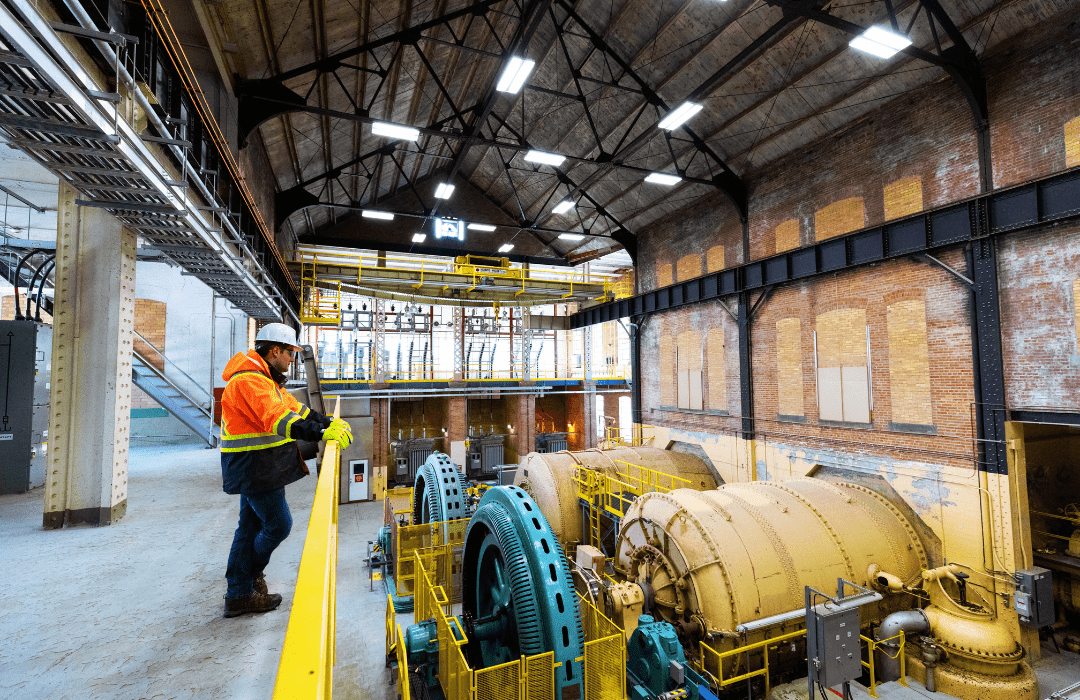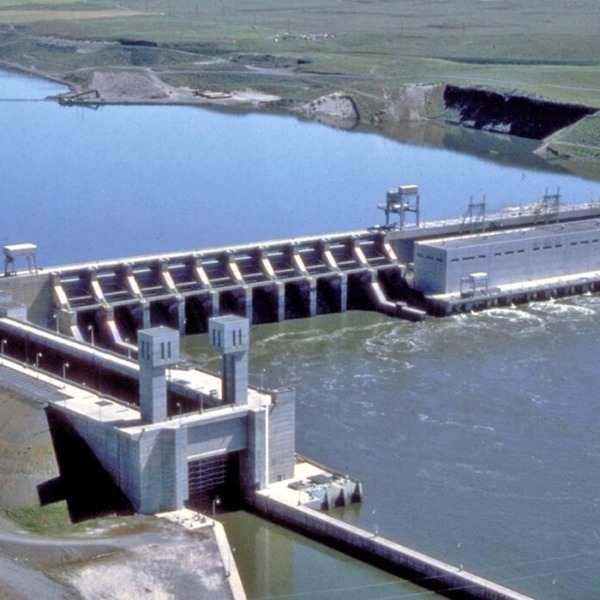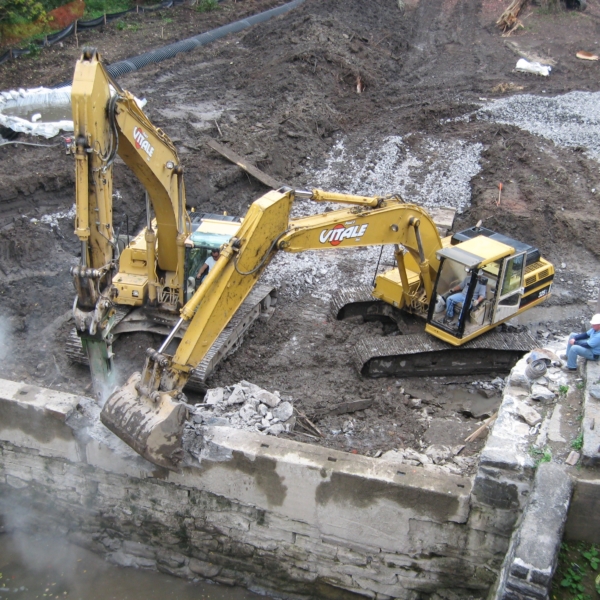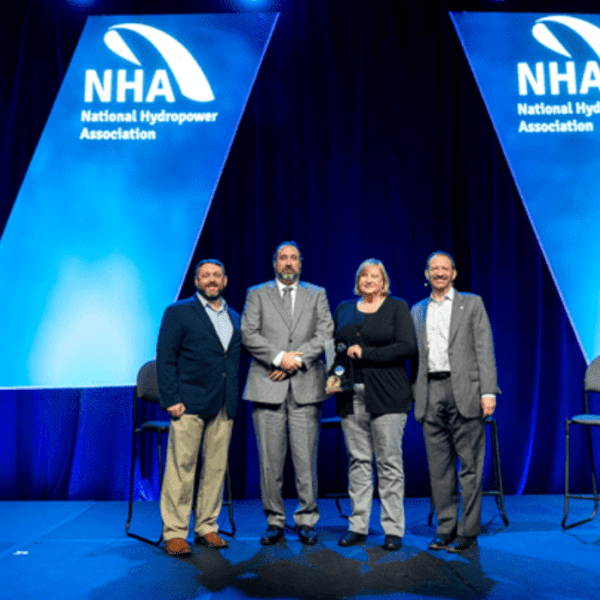Among the billons of dollars being invested by the U.S. government in the clean energy sector are a series of programs dedicated exclusively for hydropower, pumped storage, and/or marine energy. Nearly three-quarters of a billion dollars is dedicated specifically for owners and developers of hydropower and pumped storage projects to maintain and enhance their existing facilities and/or to add new capacity at existing infrastructure.
The amount of U.S. government funding is staggering and unprecedented.
As dollars begin to flow (the first deadline to apply for funding is May 8 — for incentive payments for electricity generated and sold under Section 242), the industry is scrambling to sort out what kinds of work at hydro facilities qualify for which funding.
This reference article gives asset owners and their consultants guidance on the specific Hydropower Incentives Program administered by the U.S. Department of Energy. In addition to funds from these incentives, project owners and developers can also apply for grants and loans from dozens of other federal programs focused on clean electricity more generally.
For an overview of available federal programs, the National Hydropower Association (NHA) prepared a funding sources reference chart. Access the chart HERE.
This reference article on the Hydro Incentives Program provides:
THE DEEP DIVE: WHAT’S IN THE LAWS
UNDERSTANDING WHAT KINDS OF HYDRO PROJECTS QUALIFY FOR WHICH SECTIONS OF THE LAW
- New hydro development of certain types, providing incremental new hydropower generation — Section 242: Hydroelectric Production Incentives
- Existing hydro facilities at which capital improvements have resulted in efficiency increases of 3% or more — Section 243: Hydroelectric Efficiency Improvement Incentives
- Existing hydro facilities at which work has occurred or will occur related to contributing to electric transmission grid resiliency, improving dam safety, and/or reducing environmental impacts — Section 247: Maintaining and Enhancing Hydroelectricity Incentives
ANSWERS TO FREQUENTLY ASKED QUESTIONS
RECOMMENDED RESOURCES WITH HELPFUL LINKS
In addition to this article, the National Hydropower Association (NHA) is offering a series of “Show Me the Money” sessions at its upcoming annual national policy conference Waterpower Week in Washington, May 8-10, 2023, in Washington, D.C. To read details about these four sessions, click HERE.
THE DEEP DIVE: WHAT’S IN THE LAWS
In 2005, President George W. Bush signed into law the Energy Policy Act (EPAct) of 2005 (Public Law 109-58). The law calls for the development of grant programs, demonstration and testing initiatives, and tax incentives that promote alternative fuels and advanced vehicles production and use. The law also provides for tax incentives and loan guarantees for energy production of various types, including hydropower.
In particular, the law included two sections for hydropower:
- Section 242, incentive payments for electricity generated and sold from “qualified” hydroelectric facilities. To qualify, a facility must meet several criteria, as listed in the Footnote section at the end of this article.
- Section 243, incentive payments for implementation of capital improvements at a hydro project to improve facility efficiency.
Since 2014, Congress has directed funding annually through the appropriations process for incremental new hydropower generation (under the Section 242 program). To date, more than 50 facilities have received $51 million. Under the 2021 Infrastructure and Investment Jobs Act (IIJA) – also known as the Bipartisan Infrastructure Law (BIL), the program is receiving $125 million.
The program for hydropower efficiency improvements (under Section 243) had never received funding from Congress, thus no incentive payments had ever been made. Under the IIJA/BIL, this program is now receiving $75 million.
In addition to $125 million for incremental new hydropwoer generation funding (under Section 242) and $75 million for efficiency improvements (under Section 243), IIJA/BIL created a new program to maintain and enhance the existing hydropower fleet (by amending the Energy Policy Act of 2005 to create a new section of the act — titled Section 247: Maintaining and Enhancing Hydroelectricity Incentives). This program is receiving $553.6 million.
UNDERSTANDING WHAT KINDS OF HYDRO PROJECTS QUALIFY FOR WHICH SECTIONS OF THE LAW
New Hydro Development of Certain Types, Providing Incremental New Hydropower Generation — Section 242: Hydroelectric Production Incentives
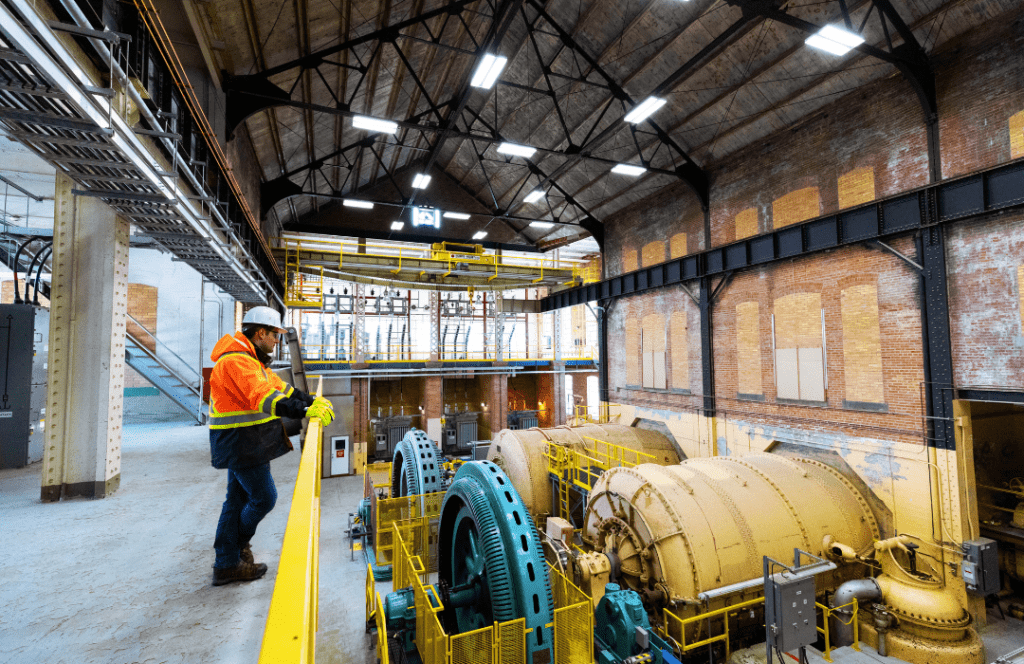
Section 242 of the law was created to spur added development at existing infrastructure, such as at existing dams that do not currently have a hydroelectric generating component or at existing conduits being used for water distribution.
According to guidance from the U.S. Department of Energy’s Grid Deployment Office, “added development” means installing a turbine or other generating device where none existed before. The “added development” needs to have been installed on or after October 1, 2005, for dams or conduits completed before November 15, 2021.
Also eligible for funding are new greenfield projects that are 20 MW or less and are operating in areas of inadequate electric service. The definition of inadequate electric service is provided in the Footnote No. 2 at the end of this article.
In addition, “added” can mean to repair or replace an existing turbine or other electricity generating device that has been offline because of disrepair or dismantling for at least five consecutive years immediately prior to October 1, 2005. The repair or replacement needs to take place between October 1, 2005, and September 30, 2027.
The amount of incentive payments a facility receives is tied to the amount of hydropower generated by the retrofit of the non-powered dam or conduit, or by the development of a new greenfield project. For every kilowatt-hour of electricity produced, the owner receives $0.018.
A facility can receive up to $1 million a year, every year for 10 years.
Status:
- $125 million available in incentive payments
- Asset owners can apply now for payments on electricity generated and sold at qualifying facilities in calendar years 2021 and 2022
- Deadline to apply: May 8, 2023
Existing Facilities at Which Capital Improvements Have Resulted in Efficiency Increases of 3% or More — Section 243: Hydroelectric Efficiency Improvement Incentives
Section 243 of the law was created to encourage efficiency improvements at existing hydropower facilities.
For owners or operators of existing hydroelectric facilities, including both conventional hydro and pumped storage hydropower, that are making capital improvements that will improve facility efficiency by at least 3% will want to apply for funds via Section 243. Efficiency increases are calculated per unit at a facility, according to the U.S. Department of Energy’s Grid Deployment Office.
Status:
- $75 million available in incentives
- A single qualified hydroelectric facility, including pumped storage hydropower, may only receive one incentive payment from this program within a single fiscal year, and that payment shall not exceed $5 million.
- Payment shall not exceed 30% of the costs of the applicable capital improvement.
- Funding is disbursed when the project is complete; while there is no deadline for completion, the U.S. Department of Energy will monitor agreed-upon milestones with the expectation that the project will be completed on schedule.
- Tools are available from DOE to use in calculating facility efficiency increases – click HERE and scroll to 3rd paragraph to access Excel worksheets
- Deadline to apply: June 20, 2023
Existing Hydro Facilities at Which Work Has Occurred or Will Occur Related to Contributing to Grid Resiliency, Improving Dam Safety, and/or Reducing Environmental Impacts — Section 247: Maintaining and Enhancing Hydroelectricity Incentives
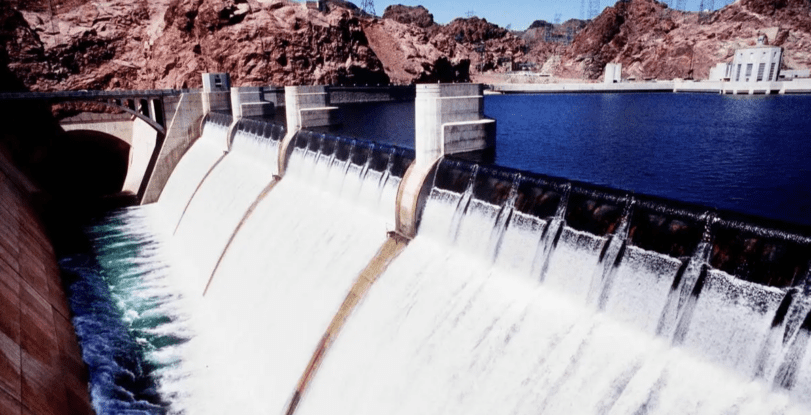
Section 247 of the law (added in 2021 via an amendment to the Energy Policy Act of 2005) was created to maintain and enhance existing hydroelectric facilities to ensure asset owners can continue to provide clean electricity, while: providing grid resiliency (such as integrating non-dispatchable energy resources such as wind and solar), improving dam safety, and/or reducing environmental impacts.
Owners and operators of hydropower facilities can potentially receive incentive payments for improvements in the following areas:
1) Grid Resilience – improvements to:
- Adapt more quickly to changing grid conditions;
- Provide ancillary services, including black-start capabilities, voltage support, and spinning reserves;
- Help integrate variable sources of electricity generation; or
- Manage accumulated reservoir sediments.
Owners of qualified pumped storage hydropower facilities are also eligible to apply under Section 247. Qualified hydroelectric facilities that make capital improvements related to the addition of energy storage such as reservoir capacity, pumped storage hydropower, and batteries may be eligible to receive an incentive payment.
2) Dam Safety — improvements to:
- Maintain or upgrade spillways or other appurtenant structures;
- Make dam stability improvements, including erosion repair and enhanced seepage controls; or
- Upgrade or replace floodgates or natural infrastructure restoration or protection to improve flood risk reduction.
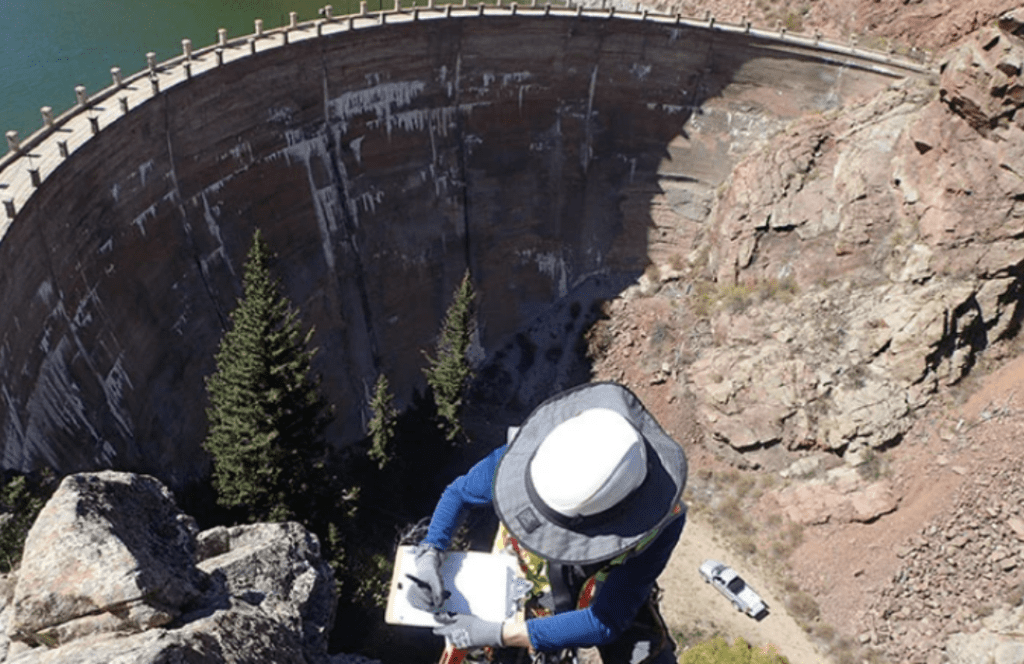
3) Environmental — improvements to:
- Add or improve safe and effective fish passage, including new or upgraded turbine technology, fish ladders, fishways, and all other associated technology, equipment, or other fish passage technology to a qualified hydroelectric facility;
- Improve the quality of water retained or released by a qualified hydroelectric facility;
- Promote downstream sediment transport processes and habitat maintenance; or
- Improve recreation access to a project’s vicinity, including roads, trails, boat ingress and egress, flows to improve recreation, and infrastructure that improves river recreation opportunity.
Status:
- $553.6 million available in incentives
- A single qualified hydroelectric facility may only receive one incentive payment from this program within a single fiscal year, and that payment shall not exceed $5 million.
- Payment shall not exceed 30% of the costs of the applicable capital improvement.
- Draft application guidance was released on February 8, 2023, by the U.S. Department of Energy’s Grid Deployment Office (GDO) for public comment to inform the implementation. Responses were due on February 28, 2023.
- The National Hydropower Association (NHA) commented that DOE should read the language in the law as examples, not limiting parameters, and to provide further information when the final guidance is released.
- DOE is reviewing comments; final guidance from DOE for applying, including deadlines, is pending.
- DOE reports that final guidance and solicitation is scheduled for release in the second quarter (April through June) of 2023.
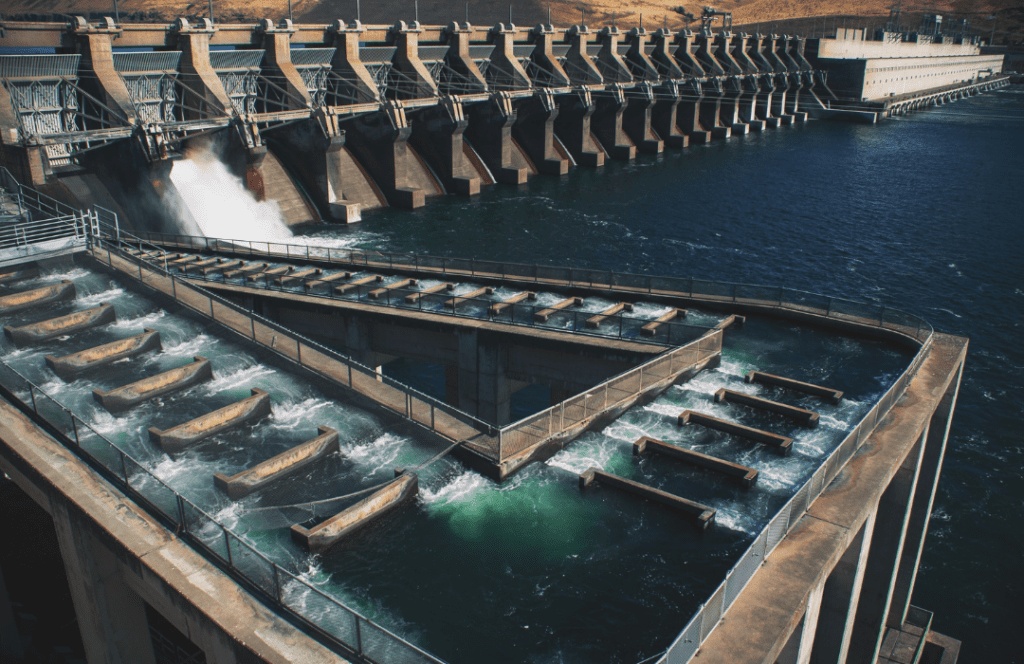
ANSWERS TO FREQUENTLY ASKED QUESTIONS
Q: Are there restrictions on what kinds of owners and developers can apply for incentive payments? For example, does it matter if the owner of the existing facility or the developer of a new facility is a publicly owned entity (municipal, state, or federal), an investor-owned utility (IOU), or an independent power producer (IPP)?
A: For Section 242, the owner must be a non-federal entity.
For Section 243, there are no limitations on ownership.
For Section 247, the facility must be licensed by the Federal Energy Regulatory Commission (FERC) or subject to permit granted prior to June 10, 1920.
Q: Can DOE staff tell an asset owner exactly which type of funding to apply for?
A: No. DOE staff is restricted from answering these specific questions. The best advice is to read the statutes and apply for program(s) for which projects appear eligible.
Q: Can an asset owner apply for incentives from more than one program.
A: Yes. Asset owners and developers are encouraged to apply for all the programs for which they are eligible.
Q: In applying for incentive payments, will asset owners need to meet environmental justice-related requirements, such as Justice 40?
A: Yes, for Section 243. While the final guidance for Section 247 has not been released, NHA anticipates environmental justice requirements will be included.
Q: Can an asset owner be eligible for tax credits under the Inflation Reduction Act if it applies for hydro incentives funding under Sections 242, 243, and/or 247?
A: Yes. Available tax credits are separate and distinct from the hydro incentive payments.
Q: If an asset owner or project developer has additional costs for maintaining/improving existing assets and/or adding new assets beyond what the incentives payments in Sections 242, 243, and/or 247 will pay for, are there other funding sources (grants, loan guarantees, etc.) to fill the void?
A: Yes. There are a number of additional funding sources available. This “living” Funding Sources Reference Guide, available on NHA’s website and updated regularly, is a useful reference to identify available resources.
RECOMMENDED RESOURCES WITH HELPFUL LINKS
Hydroelectric Incentives Funding in the Bipartisan Infrastructure Law
Section 242: Hydroelectric Production Incentive Program
Section 243: Hydroelectric Efficiency Improvement Incentives Program
Section 247: Maintaining and Enhancing Hydroelectricity Incentives
Breaking Down the Inflation Reduction Act and the Bipartisan Infrastructure Law
FOOTNOTES
Section 242 – definition of a “qualified” facility.
To qualify to receive incentive payments under Section 242 of the 2005 Energy Policy Act, a hydro facility must:
1. have begun producing hydroelectric energy for sale on or after October 1, 2005, either through added generation capability, or at a facility where operations began prior to October 1, 2005, so long as the facility had been offline because of disrepair or dismantling for at least five consecutive years prior and underwent significant changes.
2. have either:
— added generation capability to an existing dam or conduit (as defined above), and began operation between October 1, 2005 and September 30, 2027; or
— a generating capacity of not more than 20 MW, must be a non-federal entity which received a construction authorization from FERC, if applicable, and is constructed in an area in which there is inadequate electric service.
To be considered an area in which there is inadequate electric service, the facility must demonstrate one of the following:
– A lack of access to the electric grid, as demonstrated by a lack of connection to a regional or national interconnected transmission system, such as the Eastern Interconnect, the Western Interconnect, or the Texas Interconnect;
– A significantly high frequency of electric outages, as demonstrated by a reported annual common reliability metric, including but not limited to SAIFI without MED, that is in the highest 10% of total annual reported outages; or
– A significantly high cost of electricity, as demonstrated by a reported annual average price of retail residential electricity that is in the highest 10% of total annual reported average retail residential electricity price.
3. Be located in a state or in U.S. jurisdictional waters.
4. Have a water-powered turbine or other generating device (including conventional or new and innovative technologies capable of continuous operation)
5. Be owned by a non-federal entity and is operated by a non-Federal entity.
6. The owner or authorized operator must be applying on behalf of:
— a FERC-jurisdictional hydroelectric facility, as the holder of a license or exemption issued by FERC for the operation of such hydroelectric facility; or
— a non-FERC-jurisdictional hydroelectric facility, as the holder of the exclusive rights to the beneficial use of the hydroelectric facility, including legal title.
Section 243 – definition of a “qualified” facility.
To qualify to receive incentive payments under Section 242 of the 2005 Energy Policy Act, amended by the 2021 Infrastructure and Investment Jobs Act, a hydro facility must:
1) have been placed in service before November 15, 2021.
2) be operable at the time an application is submitted (non-operable facilities are not eligible for a payment)
In addition, the capital improvement(s) that are made must be:
- On the hydroelectric facility side of the point of interconnection or common coupling with the electric utility, or
- In a facility that remotely controls hydroelectric facility operations.



